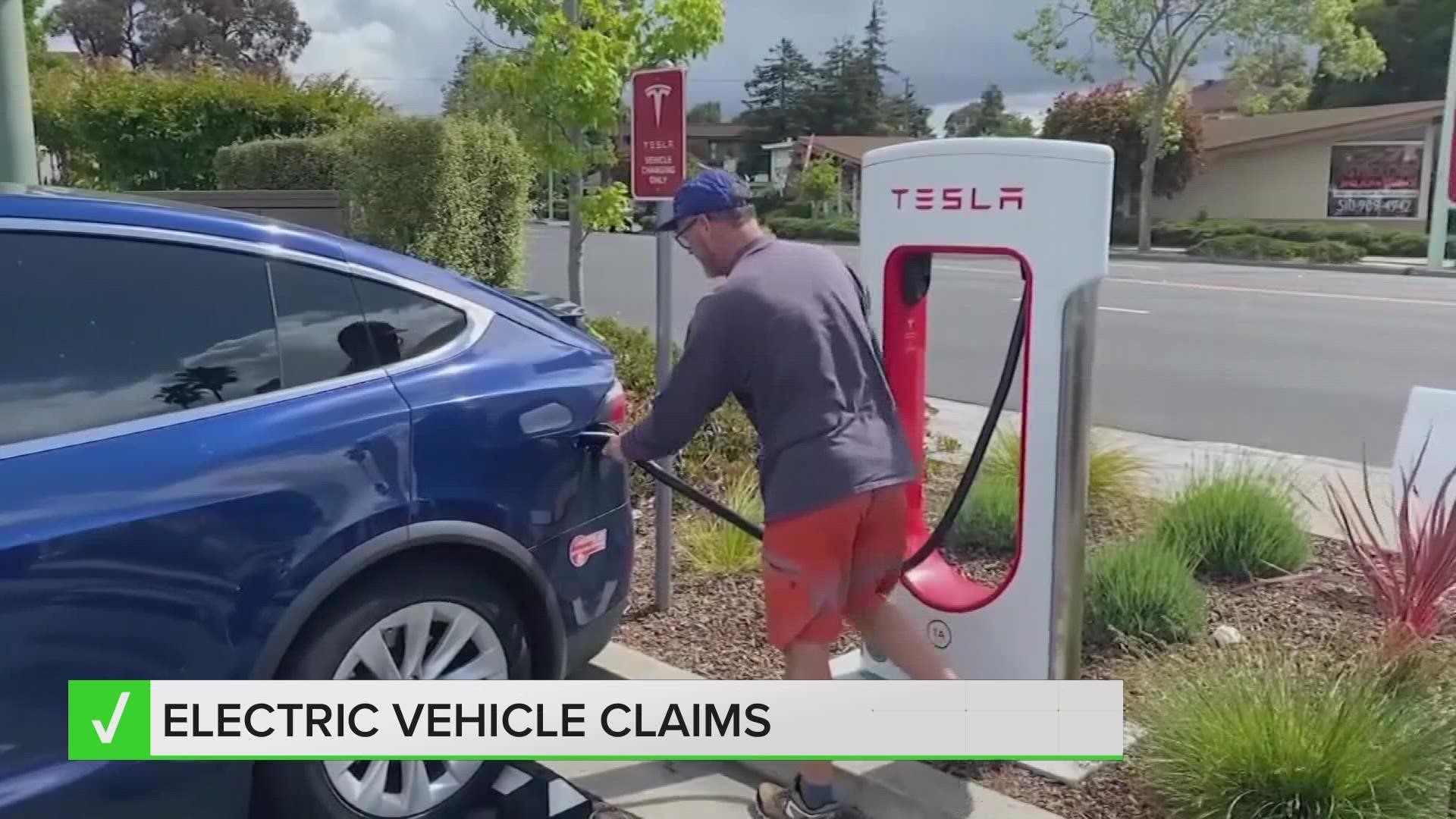MICHIGAN, USA — The price of fuel hovered near $4.80 per gallon for many West Michigan communities Tuesday.
Analysts have said the state may yet hit $5 this summer and thus, electric vehicles may be looking more and more attractive.
But will they work for your daily drive, let alone that next road trip?
The 13 ON YOUR SIDE Verify Team crunched the data:
THE QUESTION
- Do reduced ranges make regularly driving an electric vehicle impractical?
- Do electric vehicles lose 10% of their battery capacity after 100,000 miles of use?
THE SOURCES
THE ANSWER
Mixed. Though the ranges of most modern electric vehicles roughly equate to those of their gas-powered equivalents, there is some truth to the claim maximum driving distances decrease over time as batteries degrade. Research into battery longevity suggests the decline may be considerably more modest than many claims to the contrary suggest.
WHAT WE FOUND
Recent research has found so-called "range anxiety" numbers among the most significant barriers to mass adoption of electric vehicle technology.
Look no further than a report just out from Car and Driver, which showed maximum driving distance occupied a spot among the top five concerns for would-be EV drivers.
More than 40% of those who responded said it was a consideration.
Yet, a quick web search reveals there’s a great deal of conflicting information regarding just how far electric vehicles are actually capable of traveling.
What’s fact and what’s fiction?
We’ll begin with the number you’ll see on the window sticker.
That figure is referred to as the "EPA combined range," generally, a loose estimate of the maximum number of miles a car can be driven at various speeds.
With a promised 358 miles in the case of its Model 3, Tesla’s website invites drivers to "go anywhere."
Lucid Motors’ new sedan, the Lucid Air, further ups-the-ante with an estimated range of 520 miles.
Auto data company Edmund’s put the several dozen most sought-after models through the paces and found most did come within striking distance of EPA estimates.
Few modern cars came in below the 250 mile mark.
In fact, many ranges hovered between 300-400 miles, similar to a comparable gas-powered car, which typically offer ranges of 200-400 miles depending upon the make and model.
In the case of EVs, however, critics suggest maximum driving distances diminish over time.
The post cited at the outset claimed drivers would lose roughly 10% of capacity after 100,000 miles.
Actual testing seemed to vary, though Tesla estimated its Model S would lose approximately 10% of its range by the time it had been driven for 125,000 miles.
Environmental factors—including ambient air temperature—may play a larger role in overall battery life.
►Make it easy to keep up to date with more stories like this. Download the 13 ON YOUR SIDE app now.
Have a news tip? Email news@13onyourside.com, visit our Facebook page or Twitter. Subscribe to our YouTube channel.

